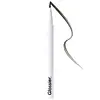What's inside
What's inside
 Key Ingredients
Key Ingredients

No key ingredients
 Benefits
Benefits

 Concerns
Concerns

 Ingredients Side-by-side
Ingredients Side-by-side

Water
Skin ConditioningButylene Glycol
HumectantMethyl Trimethicone
Skin ConditioningAcrylates Copolymer
Stearic Acid
CleansingPolyglyceryl-2 Triisostearate
EmulsifyingPalmitic Acid
EmollientCeresin
Emulsion StabilisingSynthetic Beeswax
Emulsion StabilisingSynthetic Wax
AbrasiveHydrogenated Coco-Glycerides
EmollientPolysorbate 60
EmulsifyingCaprylyl Glycol
EmollientGlycerin
Humectant1,2-Hexanediol
Skin ConditioningPhenoxyethanol
PreservativeBentonite
AbsorbentPotassium Sorbate
PreservativeHydroxyethylcellulose
Emulsion StabilisingPvp
Emulsion StabilisingSodium Benzoate
MaskingTromethamine
BufferingAlcohol
AntimicrobialEthylhexylglycerin
Skin ConditioningSodium Dehydroacetate
PreservativeIron Oxides
CI 77891
Cosmetic ColorantC12-15 Alkyl Ethylhexanoate
EmollientPolyethylene
AbrasiveTrimethylsiloxysilicate
EmollientPolyisobutene
Water, Butylene Glycol, Methyl Trimethicone, Acrylates Copolymer, Stearic Acid, Polyglyceryl-2 Triisostearate, Palmitic Acid, Ceresin, Synthetic Beeswax, Synthetic Wax, Hydrogenated Coco-Glycerides, Polysorbate 60, Caprylyl Glycol, Glycerin, 1,2-Hexanediol, Phenoxyethanol, Bentonite, Potassium Sorbate, Hydroxyethylcellulose, Pvp, Sodium Benzoate, Tromethamine, Alcohol, Ethylhexylglycerin, Sodium Dehydroacetate, Iron Oxides, CI 77891, C12-15 Alkyl Ethylhexanoate, Polyethylene, Trimethylsiloxysilicate, Polyisobutene
Water
Skin ConditioningButylene Glycol
HumectantGlycerin
HumectantStyrene/Acrylates Copolymer
Alcohol
AntimicrobialPentylene Glycol
Skin ConditioningAmp-Acrylates Copolymer
Steareth-20
CleansingSodium Dehydroacetate
PreservativeBentonite
AbsorbentPEG-40 Hydrogenated Castor Oil
EmulsifyingPvp
Emulsion StabilisingCitric Acid
BufferingSodium Citrate
BufferingPhenoxyethanol
PreservativeCI 77266
Cosmetic ColorantIngredients Explained
These ingredients are found in both products.
Ingredients higher up in an ingredient list are typically present in a larger amount.
Alcohol comes in many different forms. Different types of alcohol will have different effects on skin. This ingredient is usually an astringent alcohol.
These alcohols are drying on the skin. They may strip away your skin's natural oils and even damage your skin barrier. Astringent alcohols may also irritate skin.
Other types of astringent alcohols include:
According to the National Rosacea Society based in the US, you should be mindful of products with these alcohols in the top half of ingredients.
Any type of sanitizing product will have high amounts of alcohol to help kill bacteria and viruses.
Fatty alcohols come from plant oils such as coconut oil. These can help hydrate the skin and are non-irritating. Some fatty alcohols include cetyl and stearyl alcohol.
Learn more about AlcoholBentonite is an aluminium phyllosilicate clay with great absorbent properties. The name 'bentonite' comes from the area where the largest source is found: Fort Benton, Wyoming.
As a clay, bentonite is often used to absorb excess oil and provide exfoliation. It has also been shown to have some antibacterial and anti-inflammatory properties. Studies show bentonite was effective at calming dermatitis from poison ivy and in diaper dermatitis of infants. Bentonite has also been shown to act as a barrier against toxic compounds on your skin.
Sunscreens containing bentonite display higher water resistance and stay on the skin for much longer. The sunscreens containing bentonite also show higher potency and UV light absorbtion.
Bentonite is naturally created from volcanic ash and several natural weathering/hydrothermal processes.
A common usage of bentonite is removing excess protein from white wines. Bentonite contains a property of being able to absorb large amounts of protein from aqueous solutions.
Phyllosilicate clay has a structure formed by sheets.
Learn more about BentoniteButylene Glycol (or BG) is used within cosmetic products for a few different reasons:
Overall, Butylene Glycol is a safe and well-rounded ingredient that works well with other ingredients.
Though this ingredient works well with most skin types, some people with sensitive skin may experience a reaction such as allergic rashes, closed comedones, or itchiness.
Learn more about Butylene GlycolGlycerin is already naturally found in your skin. It helps moisturize and protect your skin.
A study from 2016 found glycerin to be more effective as a humectant than AHAs and hyaluronic acid.
As a humectant, it helps the skin stay hydrated by pulling moisture to your skin. The low molecular weight of glycerin allows it to pull moisture into the deeper layers of your skin.
Hydrated skin improves your skin barrier; Your skin barrier helps protect against irritants and bacteria.
Glycerin has also been found to have antimicrobial and antiviral properties. Due to these properties, glycerin is often used in wound and burn treatments.
In cosmetics, glycerin is usually derived from plants such as soybean or palm. However, it can also be sourced from animals, such as tallow or animal fat.
This ingredient is organic, colorless, odorless, and non-toxic.
Glycerin is the name for this ingredient in American English. British English uses Glycerol/Glycerine.
Learn more about GlycerinPhenoxyethanol is a preservative that has germicide, antimicrobial, and aromatic properties. Studies show that phenoxyethanol can prevent microbial growth. By itself, it has a scent that is similar to that of a rose.
It's often used in formulations along with Caprylyl Glycol to preserve the shelf life of products.
Pvp is a water-soluble synthetic polymer and common hairstyling ingredient. It is a film-forming ingredient and used to "hold" specific shapes of hair.
Pvp is less effective in high-humidity. It tends to draw moisture, but this moisture dismantles the structure and "hold".
This ingredient is a preservative with antimicrobial properties. It is the sodium salt of dehydroacetic acid.
It is especially effective at preventing bacterial and fungal growth in low concentrations.
Water. It's the most common cosmetic ingredient of all. You'll usually see it at the top of ingredient lists, meaning that it makes up the largest part of the product.
So why is it so popular? Water most often acts as a solvent - this means that it helps dissolve other ingredients into the formulation.
You'll also recognize water as that liquid we all need to stay alive. If you see this, drink a glass of water. Stay hydrated!
Learn more about Water